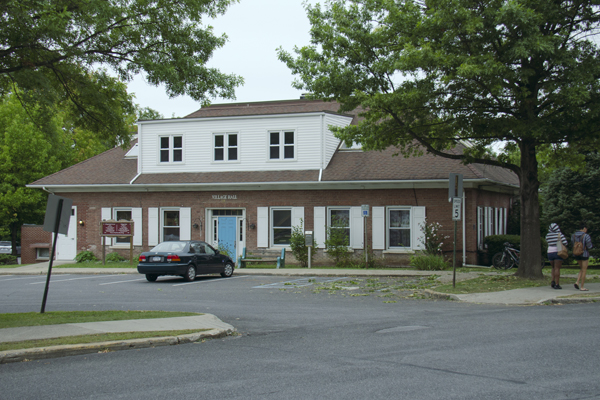
New alternative energy lights have long been a topic of discussion in New Paltz, but steps toward “green” energy have just begun, according to a Central Hudson presentation at the April 23 New Paltz Village Board meeting.
All lights in the Village of New Paltz, except 10 near the town hall, are owned and maintained by Central Hudson Gas and Electric, according to Supervisor of Central Hudson in Catskill and Kingston, William Cotting.
Because of this, the village currently pays $65,000 per year for Central Hudson to maintain the current 70-watt high-pressure sodium lighting fixtures, according to New Paltz Village Mayor Jason West.
Cotting said transitioning the 285 lights in the village to LED lighting would save about $20 per fixture a year in energy savings, totalling in approximately $6,000 in savings per year.
However, in order for the village to transition to LED lighting, they would need to purchase the lights from Central Hudson for about $58,000, and the village would have to maintain the fixtures and hire a high voltage contractor.
According to Cotting, the reason for this is because Central Hudson does not currently offer LED lighting. The company is planning on having these lights by the end of the year, raising the issue of which municipalities would potentially get the opportunity to be transferred first.
“There’s been a lot of people showing interest,” he said. “We couldn’t say, ‘Ok, New Paltz, we’re going to do your entire village, but the Town of Lloyd, we can’t do it because we made this commitment.’ We’re going to have to spread it out.”
This could mean only a small percentage of lights would be transferred at a time.
Since there is no way to bring the LED lighting over sooner, the only other option for the village is to purchase the lights, or purchase new lights entirely, Cotting said. He said regardless, the possibility of LED lights would not go without issues that the village would need to maintain.
“Because they’re so new, the claims are that [LED’s] last 20-25 years,” he said. “We’ve done some [work] with some that they haven’t worked in a couple of years.”
Village Board member Ariana Basco commented on the possibility of an alternative solution of solar lighting at the Village Board meeting, wherein West said he is in the initial stages of exploring the idea.
Environmental studies professor at SUNY New Paltz Daniel Lipson said the decision of what method to take needs to be assessed at two different levels. First, at the government-as-consumer level, the village would need to decide whether such lights are cost-effective and whether they are environmentally beneficial. Second, they must look at the processes and practices in mining for the materials that are required in photo-voltaic cells (PV cells) and in any other materials that are part of solar lighting, he said.
Chair of the Department of Sociology at SUNY New Paltz Brian Obach said he is in favor of a switch to alternative energy for lighting in the village.
“The energy demand for lights is not that great and most street lights would be well positioned to capture solar energy efficiently,” he said. “Renewable self-reliant energy also makes us less vulnerable to catastrophic events that can result in region wide blackouts.”
West said the concept is in discussion, but has never been officially brought to the board.
The board must now decide whether or not they wish to purchase the 275 lights Central Hudson owns in order to transfer the village into LED lighting, whether they want to purchase separate new fixtures for solar lighting options, or if they would wait for the LED lighting to become available next year.
